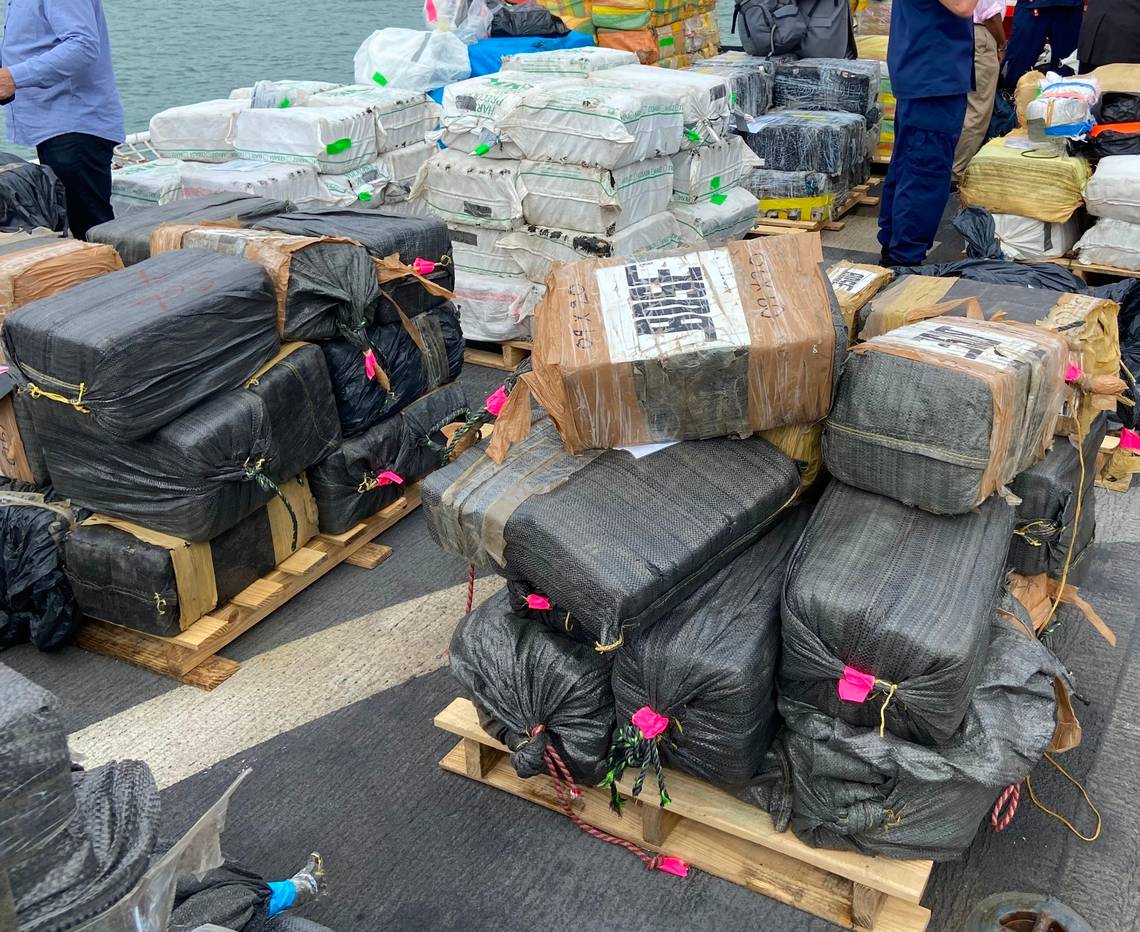
For decades, huge bundles of cocaine have washed up on Florida beaches, having been smuggled from South and Central America. Hauls are often dumped at sea (both to give to smugglers and evade law enforcement), and currents and tides push them to shore. In June, the U.S. Coast Guard seized over 14,100 pounds (6,400 kilograms) of cocaine in the Caribbean Sea and Atlantic Ocean, with an estimated value of $186 million.
With so much cocaine entering the waters, Tom "The Blowfish" Hird wanted to find out whether the thousands of sharks off Florida were ingesting the dumped narcotics, and — if so — whether the drugs were having any impact on them. In "Cocaine Sharks," which is part of Discovery's Shark Week, Hird and University of Florida environmental scientist Tracy Fanara carry out a series of experiments to find out.
"The deeper story here is the way that chemicals, pharmaceuticals and illicit drugs are entering our waterways — entering our oceans — and what effect that they then could go on to have on these delicate ocean ecosystems," Hird told Live Science.

Hird and Fanara set their sights on the Florida Keys, where fishers tell stories of sharks consuming drugs that have been funneled into the region on ocean currents. In the show, they dive with sharks to look for any unusual behaviors and begin to see sharks acting in unexpected ways. One great hammerhead (Sphyrna mokarran) — a species that's normally wary of people — comes straight at the team and appears to be swimming with a wonk. At a shipwreck 60 feet (18 meters) beneath the surface, Hird encounters a sandbar shark (Carcharhinus plumbeus) that appears to be fixated on something and swims in tight circles, despite there being nothing in sight.
Related: Fish get addicted to meth in polluted rivers, go through withdrawal
To investigate further, Hird and Fanara design three experiments to see how sharks react to bales of "cocaine" dropped in the water. They create packages similar in size and appearance to real cocaine bales. In the first, they set these pseudo-bales next to dummy swans to see what the sharks go to. To their surprise, the sharks head straight for the bales, taking bites from them. One shark even grabs a bale and swims off with it.

Next, they make a bait ball of highly concentrated fish powder, which would trigger a dopamine rush as close to a hit of cocaine as the team could feasibly (and ethically) do. The sharks are seen going wild. "I think we have got a potential scenario of what it may look like if you gave sharks cocaine," Hird said in the film. "We gave them what I think is the next best thing. [It] set [their] brains aflame. It was crazy."
Finally, the team drop their fake cocaine bales from an airplane to simulate a real-life drug drop — and multiple shark species, including tiger sharks (Galeocerdo cuvier), move in.
Hird said that what they uncovered doesn't necessarily show that sharks in Florida are consuming cocaine. A multitude of factors could explain the behavior observed during filming, and these experiments would need to be repeated over and over to draw full conclusions.
"We have no idea what [cocaine] could do to the shark," Hird told Live Science, adding that of the limited research that's been done, different fish appear to react in different ways to the same chemical. "So we can't even say well this is a baseline and go from here," he said.
But he said he hopes the show will lead to more research in the area, and that he'd like to carry out more tests, including on tissue and blood samples, to find out whether there is evidence of cocaine in these sharks' bodies.
And it's not just cocaine that may be a problem. "The other thing we might find is actually this long flow, [this] drip of pharmaceuticals: caffeine, lidocaine, cocaine, amphetamine, antidepressants, birth control — this long slow drift of them from cities into the [ocean] is… starting to hit these animals," Hird said.
"Cocaine Sharks" is on the Discovery Channel at 10 p.m. ET/PT on Wednesday, July 26.







